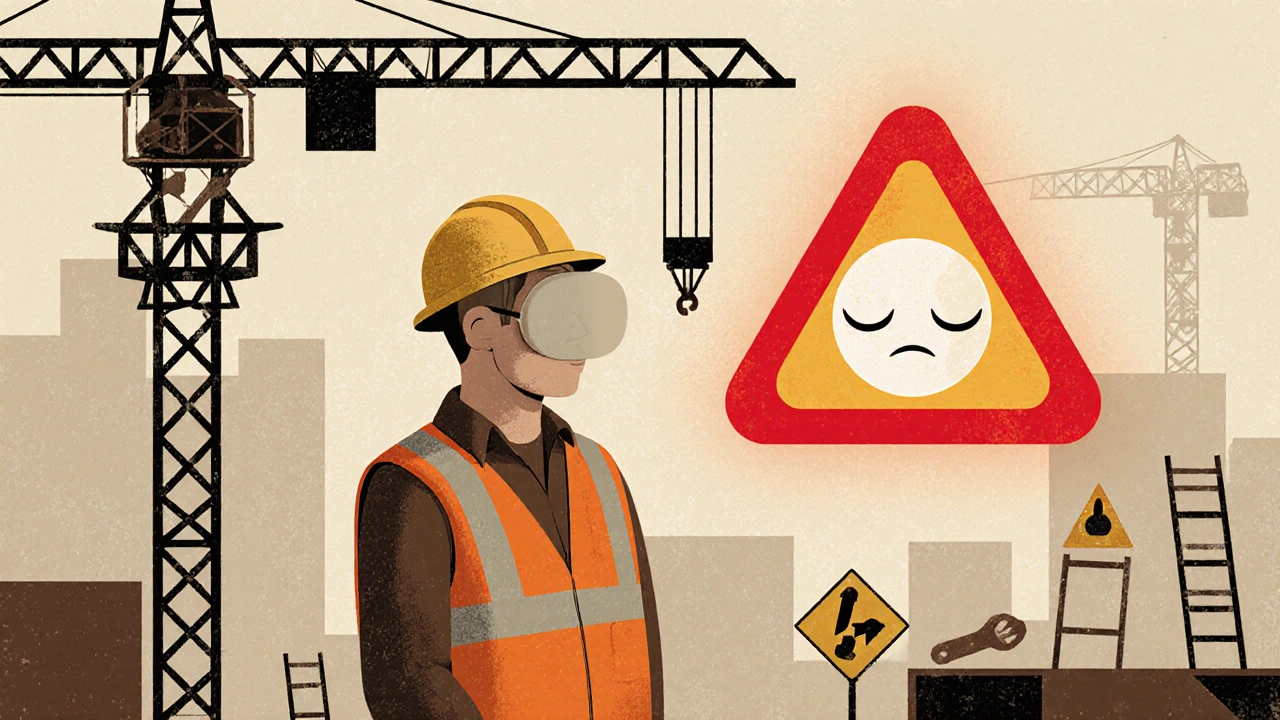Antihistamine Safety Checker
Select your antihistamine and job type to see safety recommendations
Antihistamine Types
First-Generation (Drowsy)
Diphenhydramine (Benadryl), Chlorpheniramine (Chlor-Trimeton), Hydroxyzine (Atarax)
Second-Generation (Non-Drowsy)
Loratadine (Claritin), Cetirizine (Zyrtec), Fexofenadine (Allegra)
Many people take antihistamines without thinking twice. They grab a pill for sneezing, itchy eyes, or a runny nose, and go about their day. But what if that pill is silently slowing you down-without you even realizing it? For workers in construction, trucking, healthcare, manufacturing, or aviation, this isn’t just a minor inconvenience. It’s a serious safety risk.
Why Some Antihistamines Make You Drowsy
Not all antihistamines are the same. The ones that cause drowsiness are called first-generation antihistamines. These include diphenhydramine (Benadryl), chlorpheniramine (Chlor-Trimeton), and hydroxyzine (Atarax). They work by blocking histamine, a chemical your body releases during allergic reactions. But here’s the problem: histamine isn’t just in your nose and throat. It’s also in your brain, where it helps keep you alert. When these older antihistamines cross the blood-brain barrier, they interfere with that signal. The result? Slowed reaction time, fuzzy thinking, and a strong urge to nod off-even if you feel fine.The Hidden Danger: You Don’t Feel Drowsy, But You’re Impaired
This is the most dangerous part. Most people who take these meds don’t feel like they’re drunk or sleepy. Yet, studies show their performance drops sharply. One 2013 study found that drivers on first-generation antihistamines had 25-30% slower reaction times and 50% more lane drifting in driving simulators. That’s worse than being legally drunk in some places. And it’s not just drivers. Workers operating heavy machinery, climbing ladders, or handling sharp tools are at risk too. A truck driver on Reddit shared how he failed a roadside cognitive test after taking Benadryl-even though he swore he felt wide awake. He couldn’t touch his nose with his finger, a simple test of coordination. That’s not laziness. That’s brain fog caused by medication.Second-Generation Antihistamines Are the Safer Choice
The good news? There’s a better option. Second-generation antihistamines like loratadine (Claritin), cetirizine (Zyrtec), and fexofenadine (Allegra) were designed to avoid the brain. They’re built with chemical properties that let the body’s natural transporters push them out of the central nervous system. As a result, they don’t cause the same level of impairment. Studies show their effects on reaction time and coordination are nearly identical to a placebo. In fact, 78% of Allegra users report no drowsiness, compared to just 12% of Benadryl users. For anyone working in a safety-sensitive job, this isn’t a preference-it’s a necessity.
Real-World Consequences in High-Risk Jobs
The numbers don’t lie. The U.S. National Highway Traffic Safety Administration estimates 100,000 police-reported crashes each year are caused by drowsy driving. Many of those involve antihistamines. And it’s not just roads. First-generation antihistamines are the most common drug found in the blood of pilots who died in crashes. In healthcare, nurses working night shifts have reported improved alertness after switching from diphenhydramine to loratadine. Construction workers on these meds are more likely to fall. Older adults on these drugs have a higher risk of fractures. And it’s not just accidents-it’s productivity. Workers on sedating antihistamines make more mistakes, take longer to complete tasks, and miss more workdays due to fatigue.What Employers and Workers Need to Do
Companies with safety-sensitive roles-trucking, aviation, manufacturing, emergency services-are starting to act. The FAA bans first-generation antihistamines for pilots. The DOT requires employers to include antihistamine use in safety training. Forty-one percent of Fortune 500 companies now have formal policies on antihistamine use. But most workplaces still don’t talk about it. Workers need to know: if your job involves operating machinery, driving, or handling hazardous materials, you should avoid first-generation antihistamines entirely. Don’t wait for a crash to happen. Ask your doctor for a non-sedating alternative. If you’re already taking one, don’t just assume you’re fine. Test yourself. Take the pill at home before work, and see how you feel after four hours. Can you do simple math? Can you walk a straight line? Can you react quickly to a sudden sound? If not, you’re not safe to work.Timing Matters-Even If You Take It at Night
Some people think taking a sedating antihistamine at bedtime solves the problem. But that’s not always true. These drugs have long half-lives. Diphenhydramine can stay in your system for up to 30 hours. That means you could still be impaired the next morning. The National Sleep Foundation recommends waiting at least 24 hours after taking a first-generation antihistamine before returning to safety-sensitive duties. Even then, some people report next-day grogginess. That’s why the FDA advises taking these meds only at night-if you must take them at all.What to Do Right Now
If you’re using an antihistamine and work in a job where alertness matters, here’s what to do:- Check the label. If it says “may cause drowsiness” or warns against operating machinery, it’s a first-generation drug.
- Switch to loratadine, cetirizine, or fexofenadine. These are available over the counter and are just as effective for allergies.
- Don’t mix with alcohol, sleep aids, or painkillers. The combination multiplies drowsiness.
- If you’re unsure, ask your pharmacist or doctor. Say: “I need an antihistamine that won’t make me drowsy for my job.”
- Track your own symptoms. If you’ve ever felt sluggish after taking one, even if you didn’t fall asleep, that’s a warning sign.
The bottom line? Allergies are annoying. But they’re not life-threatening. Drowsiness from medication can be. There’s no reason to risk your job, your safety, or someone else’s life just to relieve a runny nose. The science is clear. The alternatives exist. And the cost of ignoring this is too high.
Do all antihistamines make you drowsy?
No. Only first-generation antihistamines like diphenhydramine (Benadryl) and chlorpheniramine cause significant drowsiness. Second-generation antihistamines like loratadine (Claritin), cetirizine (Zyrtec), and fexofenadine (Allegra) are designed to avoid the brain and typically don’t cause drowsiness.
Can I drive after taking Benadryl if I don’t feel sleepy?
No. Even if you don’t feel drowsy, Benadryl can still impair your reaction time, coordination, and decision-making. Studies show it slows reactions by 25-30% and increases lane drifting by 50%. You may feel fine, but your brain isn’t working at full capacity. Driving under these conditions is dangerous and illegal in many places.
How long does drowsiness from antihistamines last?
First-generation antihistamines like diphenhydramine have a half-life of 15-30 hours. Peak impairment happens 2-4 hours after taking it, but effects can last up to 18 hours. Some people report next-day grogginess. Second-generation antihistamines typically last 8-12 hours with minimal lingering effects.
Is it safe to take antihistamines at night if I work during the day?
It’s better than taking them during the day, but not always safe. First-generation antihistamines can linger in your system for over 24 hours. Even if you take it at bedtime, you might still be impaired the next morning. For safety-sensitive jobs, it’s best to avoid them entirely and use non-sedating alternatives instead.
What should I do if my doctor prescribes a sedating antihistamine?
Ask if a non-sedating alternative is available. Say: “I work in a job where I operate machinery/drive/handle equipment. Is there a version that won’t affect my alertness?” Most doctors will switch you to loratadine, cetirizine, or fexofenadine. If they say no, get a second opinion. Your safety matters more than tradition.
Are there laws against driving or working while on antihistamines?
Yes. Many states and federal agencies classify impaired driving due to medication as illegal. The FAA prohibits pilots from using first-generation antihistamines. The Department of Transportation requires employers in transportation and safety-sensitive industries to address drug impairment, including antihistamines. Even if it’s not explicitly labeled as DUI, you can be held liable if you cause an accident while impaired by medication.


Sam Tyler
For years I thought Benadryl was just a harmless night-time aid. Then I worked a night shift at a warehouse and took it before bed. Woke up the next morning feeling like I’d been hit by a bus. Couldn’t focus on inventory scans. Nearly dropped a pallet because my hands were shaking. I didn’t realize how much it was affecting me until I switched to Claritin. No more fog. No more near-misses. If you’re in any job that requires precision, even a little bit, this isn’t optional. It’s survival. And honestly? If your boss doesn’t know this, they’re putting everyone at risk.
shridhar shanbhag
India also has this problem. People buy antihistamines like candy. No prescription needed. I saw a delivery rider take a Benadryl tablet before riding his scooter in 40°C heat. He said he had a cold. I asked if he knew what he was doing. He laughed. Three days later, he crashed into a wall. Broke his collarbone. No one talked about the pill. Just blamed the road. We need awareness, not just medication.
Lugene Blair
This is the most important post I’ve read all year. If you’re taking anything with diphenhydramine and you’re driving, operating tools, or standing on a ladder-you’re not just risking yourself. You’re risking everyone around you. I’m a safety officer. I’ve seen guys get fired for showing up drunk. But when they show up on Benadryl? We act like it’s fine. It’s not. It’s just as dangerous. Stop normalizing this. Switch to Zyrtec. Your coworkers will thank you. Your family will thank you. And your future self will thank you for not being a statistic.